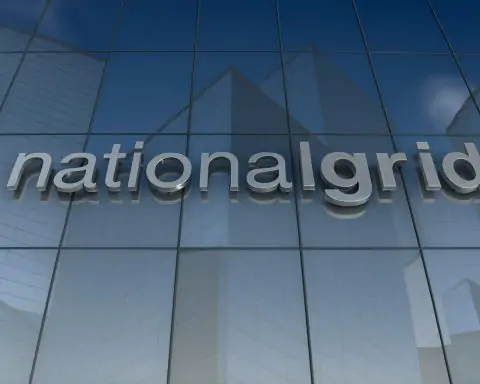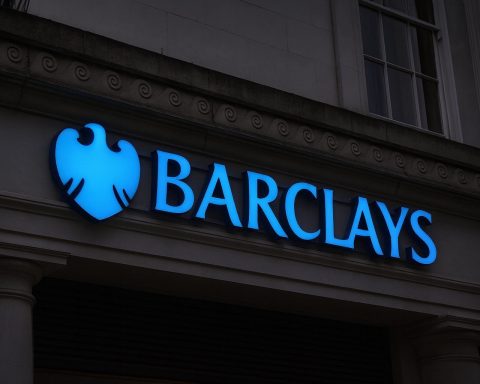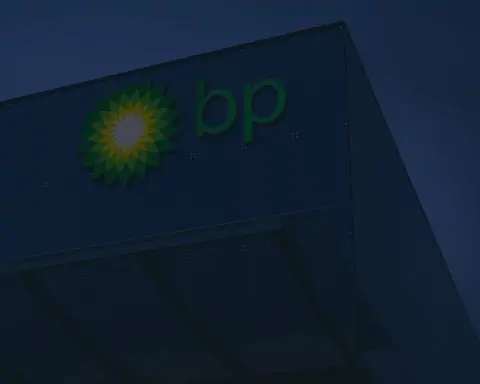Glencore plc (LON: GLEN) is trading slightly higher on Friday, 28 November 2025, as investors juggle near‑record copper prices, controversial government support for its smelters, and a fresh push into battery recycling and “green” aluminium.
Glencore share price today: where things stand
In early London trade, Glencore’s share price is hovering around 357p, up roughly 0.2% on the day and extending a powerful rebound over the past week. Real‑time data from Cboe Europe and Investing.com show GLEN at about 357.4p, with an intraday range near 356–357p and a five‑day gain of around 17%. [1]
Over the last 12 months the stock has traded in a wide band between roughly 205p and 397p, putting today’s level:
- about 10% below its 52‑week high, and
- more than 70% above the April lows. [2]
That means GLEN is now modestly positive year‑to‑date, after spending much of 2025 lagging both the FTSE 100 and global mining peers. [3]
On Glencore’s secondary listing in Johannesburg (JSE: GLN), the shares are trading around ZAR 81–82, with data from the company and the Financial Times showing levels near ZAR 81.2–81.8 on Friday, up around 4% over the last session. [4]
In the US, Glencore’s over‑the‑counter lines (GLNCY and GLCNF) last changed hands just above $9 per ADR earlier this week, broadly in line with London once FX and the ADR ratio are taken into account. [5]
Put simply: today’s move is small, but it comes after a sharp, copper‑fuelled rerating from last week’s levels.
No fresh RNS – but plenty going on in the background
Despite the price action, Glencore has not issued any new regulatory announcements today. The company’s own regulatory‑announcements page and the London Stock Exchange RNS feed both show the last updates coming on 21 November 2025, mainly “Transaction in Own Shares” notices tied to its ongoing buyback, with the most recent major operational disclosure being the Third Quarter 2025 Production Report on 29 October. [6]
On Glencore’s investor site, live share‑price tiles for 28 November show:
- LSE (GLEN): 356.7p at 08:00 GMT, unchanged from Thursday’s close
- JSE (GLN): ZAR 81.19 at 07:48 GMT, down a fraction on the day
These figures are all 10‑minute delayed, but they confirm there is no company‑specific headline driving today’s tick up – the stock is trading on the back of commodity prices, sentiment and ongoing buybacks, not fresh RNS. [7]
Copper pivot: production squeeze meets growth hopes
The main macro driver for GLEN right now is copper.
Copper near record territory
Benchmark copper futures on the London Metal Exchange remain elevated after hitting a record around $11,200 per tonne in late October. [8]
As of 28 November 2025, global pricing data show:
- Copper trading around $5.10 per pound (about $11,250 per tonne) on some US benchmarks, up ~0.4% on the day. [9]
- LME three‑month copper around $10,950–11,000 per tonne in intraday trading on Friday afternoon London time. [10]
That keeps the metal within touching distance of its all‑time highs, a huge tailwind for a miner‑trader whose portfolio is increasingly geared to so‑called “energy‑transition” metals.
Production: stronger volumes, weaker copper
Glencore’s own numbers are more nuanced.
In its H1 2025 update, the group reported: [11]
- Copper‑equivalent (CuEq) production up 5% year‑on‑year, helped by the Elk Valley Resources (EVR) steelmaking coal acquisition.
- Own‑sourced copper production down 26% to about 344kt versus H1 2024, mainly due to lower grades and recoveries at key Latin American and African mines.
- Higher volumes in cobalt (+19%), zinc (+12%) and steelmaking coal, while ferrochrome output fell sharply as some smelters were idled.
In the Third Quarter 2025 Production Report, Glencore said nine‑month own‑sourced copper production had fallen about 17% year‑on‑year (roughly 584kt vs 705kt), again thanks to lower ore grades and mine sequencing, even as it described overall operational performance as “strong” and tightened its full‑year copper guidance range. [12]
At the same time, management raised long‑term Marketing EBIT guidance to $2.3–3.5 billion per year, up from $2.2–3.2 billion, arguing that its trading arm can smooth out some of this industrial volatility. [13]
Analysts: “chance to pivot” back to copper growth
This tug‑of‑war between lower near‑term volumes and stronger long‑term pricing is exactly what some analysts are trying to frame.
In late November, RBC Capital Markets highlighted “upside potential” in Glencore shares as the company moves from a decade of shrinking copper output towards what the bank called a “chance to pivot” back to growth, citing pipeline projects and M&A, including its increased focus on recycling and downstream assets. [14]
Market‑wide consensus compiled by MarketScreener shows: [15]
- A mean rating of “Outperform” from about 18 analysts, and
- An average target price roughly 14% above the current US‑dollar equivalent of GLEN.
That doesn’t guarantee anything, but it shows today’s modest share‑price uptick is happening against the backdrop of a more bullish medium‑term copper narrative.
Smelter bailouts and closure risk: Mount Isa vs Horne
If copper is the bull case, smelter economics and environmental risk are the main counterweights.
A$600m taxpayer lifeline for Mount Isa
In Australia, Glencore’s Mount Isa copper smelter and Townsville refinery have moved from potential closure to taxpayer‑backed lifeline:
- In April 2025, Reuters reported that Glencore approached both the Australian federal government and Queensland for support to keep the Mount Isa smelter and associated Townsville refinery open, citing collapsing global treatment and refining charges and heavy competition from subsidised Chinese and Indonesian plants. [16]
- By October 2025, Australian outlets including Moneyweb, The Australian and 7News confirmed a joint state‑federal support package of around A$600m, structured over several years, to keep the smelter running and safeguard roughly 600 jobs. The deal extends the life of the operation by at least four years and averts forecast losses estimated at A$2.2bn over seven years, on condition that Glencore also commits fresh investment. [17]
Critics have described it as a “bailout of a very rich company”, but policymakers argue the smelter is a strategic asset in the critical‑minerals supply chain. [18]
Those debates remain front‑of‑mind for investors on 28 November, because they speak directly to the political risk attached to Glencore’s industrial footprint – and to the possibility of future state‑supported deals elsewhere.
Canada’s Horne smelter: closure on the horizon
At the same time, Glencore is facing the prospect of shuttering Canada’s largest copper‑metal operation, the Horne smelter in Rouyn‑Noranda, Quebec:
- A Reuters report in early November said Glencore is planning to close both the Horne smelter and its associated Canadian Copper Refinery (CCR) because of environmental pressures and more than $200m in required modernisation capex, citing industry sources. [19]
- The operations are believed to produce over 300kt of copper metal per year and employ more than 1,000 workers. [20]
- Glencore has publicly stated it is not currently considering closure and is working on emissions‑reduction and regulatory frameworks, but it is also defending a class‑action lawsuit in Quebec over arsenic emissions from the smelter. [21]
For shareholders, the contrast is stark: Australian assets being propped up with taxpayer cash, Canadian assets being scrutinised for pollution and potentially wound down. Both are capital‑intensive, both are politically sensitive – and both shape how investors value GLEN’s long‑life copper infrastructure.
Energy‑transition bets: Li‑Cycle and “green” aluminium
Behind the noisy smelter headlines, Glencore has quietly been buying optionality in energy‑transition supply chains.
Li‑Cycle: from creditor to owner
After months of restructuring drama, Glencore has now acquired Canadian lithium‑ion battery recycler Li‑Cycle out of bankruptcy:
- Reuters first revealed in March that Glencore had made an offer to acquire Li‑Cycle, where it was already the main secured creditor via convertible notes. [22]
- In May, Li‑Cycle entered creditor protection in Canada and filed Chapter 15 proceedings in the US, with Glencore providing debtor‑in‑possession financing and a stalking‑horse bid. [23]
- On 8 August 2025, Glencore confirmed the acquisition and rebranded the assets as Glencore Battery Recycling (GBR), noting that Li‑Cycle’s spokes in North America and Germany and the Rochester Hub project in New York would now be operated under the GBR umbrella. [24]
The deal gives Glencore a ready‑made network of battery‑recycling plants just as regulators and automakers push for closed‑loop EV supply chains. It also concentrates risk: external commentary has highlighted the hundreds of millions of dollars Glencore had already sunk into Li‑Cycle convertible debt, and the need to prove that the revamped business can earn its cost of capital. [25]
“Green” aluminium and critical‑metals exposure
Glencore has also been named among the cornerstone investors in the Hong Kong IPO of Chuangxin Industries Holdings, a vertically integrated Chinese aluminium producer pitching itself as a lower‑carbon player. Reports suggest the deal raised about HK$5.5bn, with cornerstone investors – including Glencore – taking a large share and the stock jumping over 30% on its first day. TechStock²+1
Along with its existing stakes and offtake agreements in nickel, cobalt, and other battery metals, these moves keep Glencore firmly embedded in energy‑transition value chains – a key reason the company is a top‑10 constituent (around 7% weight) in the MarketVector Global Clean‑Tech Metals Index. [26]
Capital returns: buybacks, dividends and the Century Aluminum trade
Glencore’s capital‑allocation story is another big piece of why GLEN’s share price looks the way it does today.
$2.2bn payout framework and 2025 distributions
In February 2025, Glencore announced plans to return about $2.2bn to shareholders in respect of its 2024 earnings:
- Roughly $1.2bn via cash distributions (effectively dividends), and
- A $1.0bn share‑buyback programme, following a year of reduced returns in 2023. [27]
Shareholders approved a $0.10 per‑share aggregate distribution, paid in two equal $0.05 tranches in April and August 2025, funded from capital‑contribution reserves. [28]
At today’s share price, the cash distribution yield screens at roughly 2–2.2%, depending on which data provider you use. [29]
Separate from those cash returns, Glencore also runs a base distribution policy that combines a fixed $1bn component with a variable amount equal to 25% of adjusted equity free cash flow from its industrial assets, leaving room for additional buybacks when conditions allow. [30]
Active $1bn buyback through to February 2026
On 7 July 2025, the company formally launched a new share‑buyback programme of up to $1bn, to be executed by UBS and scheduled to run until the release of its 2025 annual results in February 2026. The stated aim is to manage Swiss withholding‑tax exposure while shrinking the share count. [31]
Recent RNS and JSE SENS filings in October and November show steady daily repurchases under that programme, helping to support the share price through bouts of volatility. [32]
Century Aluminum: monetising an over‑earning asset
Glencore has also been recycling capital more aggressively.
On 19 November 2025, Reuters reported that Glencore cut its stake in US producer Century Aluminum (NASDAQ: CENX) from 43% to about 33%, selling 9 million shares on 10 November for roughly $272m and converting its preferred stock into common equity. [33]
The move came after Century’s share price surged about 80% since June, driven by US aluminium import tariffs being doubled to 50%, which boosted domestic smelter profits. Glencore remains Century’s largest shareholder and a key supplier and offtaker, but it has “monetised” part of the position after a policy‑driven windfall. [34]
For GLEN investors, that transaction is a concrete example of taking cash off the table in an over‑earning asset and redeploying it – whether into buybacks, debt reduction, or new projects.
Valuation snapshot and key risks
ROIC vs cost of capital
Despite the powerful rally off its lows, Glencore still trades on valuation metrics that many investors see as “cheap for a structurally important metals house” – but there are caveats.
Independent data from GuruFocus estimate Glencore’s weighted average cost of capital (WACC) at about 7.1%, versus a trailing return on invested capital (ROIC) of roughly 3.8%. TechStock²+1
That gap suggests the company’s recent mix of investments – from smelter lifelines to acquisitions like Li‑Cycle and coal‑mine rehabilitation – has not yet consistently earned more than its blended cost of debt and equity. Capital allocation quality is therefore central to any medium‑term GLEN thesis.
Balance sheet and earnings power
For 2024, Glencore reported: [35]
- Adjusted EBITDA of around $14.4bn, down 16% year‑on‑year as coal and gas markets normalised;
- Net debt rising to roughly $11.2bn, partly due to the $7bn Elk Valley steelmaking coal acquisition and heavy capex;
- A decision to review its primary London listing, amid concerns that UK valuations under‑reward its scale and cash‑generation profile.
With copper, cobalt and zinc prices still high, the potential earnings power is significant – but highly sensitive to commodity cycles and to how quickly the company winds down its legacy thermal‑coal portfolio.
What today’s move is really telling you
So what does a 0.2% uptick in GLEN on 28 November 2025 actually reflect?
- Copper remains very strong, trading near record levels even after a recent pullback, supporting the bull case for Glencore’s base‑metals portfolio. [36]
- There is no new RNS today; the last formal news was October’s production report and ongoing buyback notices. [37]
- Markets are still digesting big structural stories:
- state‑backed lifelines for Mount Isa and the optics of “bailing out” a major miner; [38]
- possible future closure of the Horne smelter in Quebec; [39]
- the integration risks and strategic upside of the Li‑Cycle battery‑recycling platform; [40]
- ongoing buybacks, dividends and capital recycling such as the Century Aluminum selldown. [41]
In that sense, today’s price action is less about 28 November itself and more a continuation of a November rerating driven by copper’s surge and the market’s slow re‑pricing of Glencore’s transition from coal‑heavy cash machine to a more complicated mix of smelters, recyclers and critical‑metals bets.
Bottom line
As of 28 November 2025, Glencore’s share price is:
- Well off its lows,
- Still below its recent peak, and
- Anchored to a web of moving parts: record‑ish copper prices, smelter bailouts and closure risks, a high‑stakes battery‑recycling acquisition, and an active $1bn buyback layered on top of regular cash returns.
For readers, the key is not whether GLEN is up or down 0.2% today, but whether you believe:
- Copper and other transition metals can stay tight enough to support higher‑through‑cycle earnings, and
- Glencore’s management can deploy capital – into smelters, recycling, M&A and buybacks – at returns that finally rise above its cost of capital.
References
1. www.investing.com, 2. markets.ft.com, 3. www.marketscreener.com, 4. www.glencore.com, 5. stockanalysis.com, 6. www.lse.co.uk, 7. www.glencore.com, 8. www.marketscreener.com, 9. tradingeconomics.com, 10. www.metal.com, 11. www.directorstalkinterviews.com, 12. in.marketscreener.com, 13. www.directorstalkinterviews.com, 14. news.futunn.com, 15. www.marketscreener.com, 16. www.reuters.com, 17. www.moneyweb.co.za, 18. criticalmineralmines.com, 19. www.marketscreener.com, 20. www.marketscreener.com, 21. www.marketscreener.com, 22. www.reuters.com, 23. www.reuters.com, 24. www.glencore.com, 25. discoveryalert.com.au, 26. www.marketvector.com, 27. www.reuters.com, 28. www.glencore.com, 29. www.investing.com, 30. www.glencore.com, 31. www.marketscreener.com, 32. www.lse.co.uk, 33. www.reuters.com, 34. www.reuters.com, 35. www.reuters.com, 36. tradingeconomics.com, 37. www.lse.co.uk, 38. www.moneyweb.co.za, 39. www.marketscreener.com, 40. www.glencore.com, 41. www.marketscreener.com







